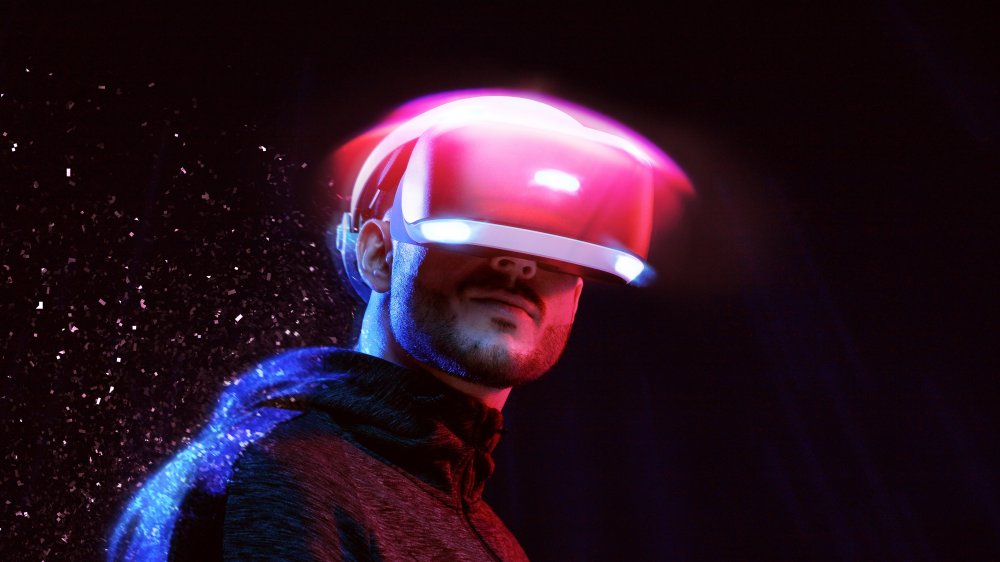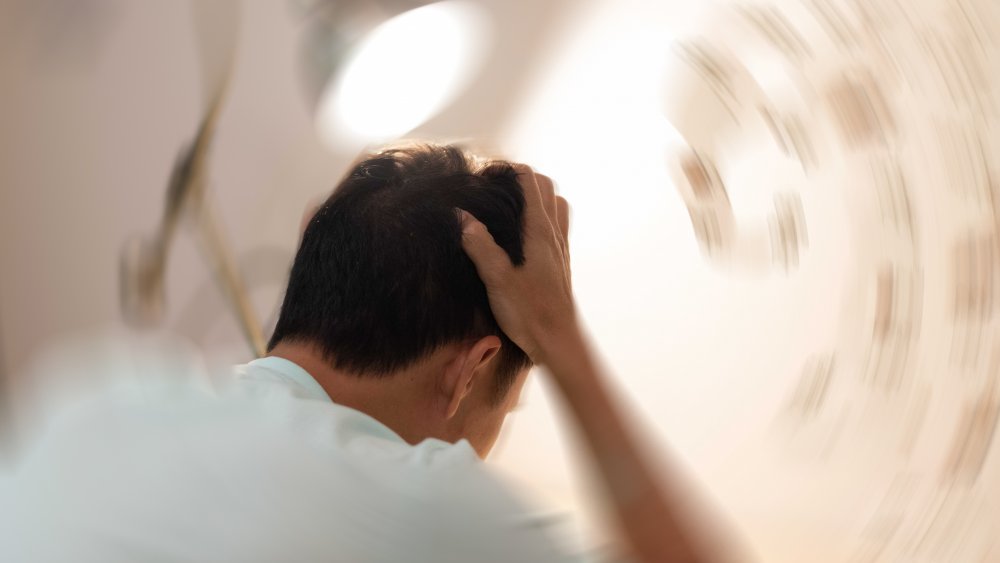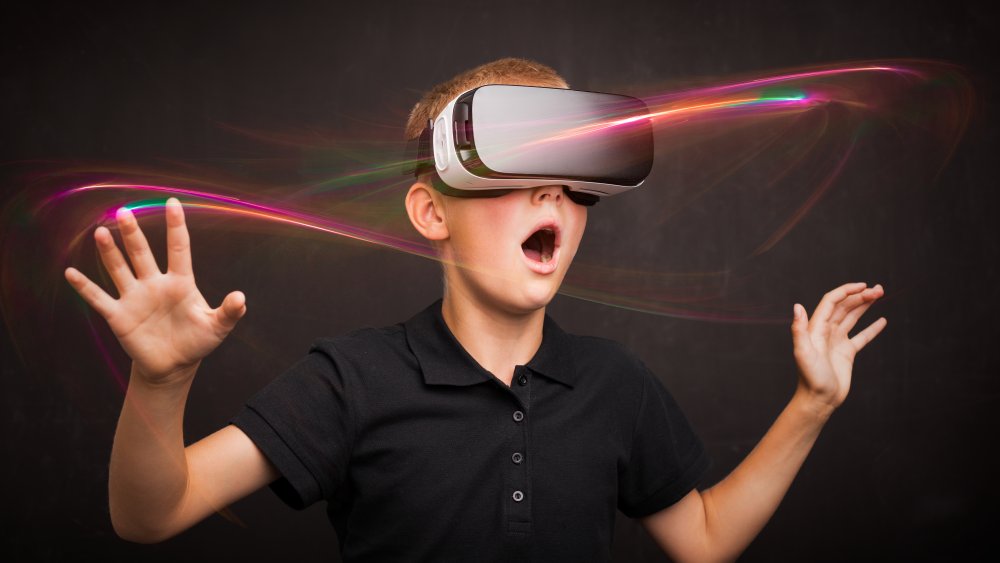Here's What Happens When You Use A VR Headset Every Day
Virtual Reality, or VR, is one of the most intriguing and cutting-edge new devices on the market today. From VR college tours, per the New York Times, to military training, the multi-dimensional experience has captivated audiences since its introduction to the tech sphere in the 1990s. Twenty years later, elements of VR can be found in almost every sector of the entertainment industry, including devices you may have in your own home: Popular video games such as The Elder Scrolls 5: Skyrim VR and Half-Life:Alyx have begun to incorporate VR technology into its user experience.
But with new technology nearly always comes unverified myths and urban legends to dissuade the youth from staring at screens for hours on end. I'm sure we can all remember being told not to sit too close to the TV screen -– or else we'd wind up cross-eyed, right? –- or that sleeping with your phone too close to your pillow will fry your brain.
Many can agree that, like all things, VR is served best with a healthy dose of moderation. But what happens when you use it too much?
Some serious warning labels
According to Business Insider, the manufacturers of popular VR devices such as the Oculus Rift and the HTC Vive recommend taking a 10 to 15 minute break from VR every 30 minutes, "even if you don't think you need it." Granted, that warning is for a very good reason: many users subject to prolonged virtual reality experience eye soreness, nausea and a loss of spatial awareness, the latter of which can result in serious physical injury.
"Many people report headaches, eye strain, dizziness and nausea after using the headsets," Science Focus previously reported. "Such symptoms are triggered by the VR illusion, which makes the eyes focus on objects apparently in the distance that are actually on a screen just centimeters away."
What's more, about 1 in 4000 VR users may experience severe dizziness, seizures, eye or muscle twitching or "blackouts triggered by light flashes or patterns," according to the instructional booklet that comes with the Oculus Rift.
It might affect your brain
One study in rats found that the virtual world can affect the brain much differently than any organic environment. According to Live Science, researchers recorded brain activity from rats running on treadmills in a virtual reality setup. The study found that the rats' brains did not form a mental map of their surroundings, which is something that would normally occur in a non-VR environment.
"We are using virtual reality more and more every day, whether for entertainment, military purposes or diagnosis of memory and learning disorders," Mayank Mehta, a neuroscientist at UCLA, told Live Science. "We are using it all the time, and we need to know ... how does the brain react to virtual reality?"
Researchers at Oregon State University also delved into this question, this time studying the muscular effects of prolonged VR use. The data found that users often engage in full-body movements (unlike traditional computer use), with users extending limbs straight out for a period of time to complete tasks in the VR world. However, regardless of the angle, extending the arm straight out "causes shoulder discomfort in as little as three minutes," according to the report.
The study, published in Applied Ergonomics, found that these arm extensions can lead to major health issues such as Gorilla Arm Syndrome, as reported by Wired, and rotator cuff injuries, the report continued. In addition, the weight of the VR headset itself may increase the burden on the cervical spine, causing serious neck strain.
One developer's insane experiment
Much like the rats in the spatial mapping experiment, Disrupt VR co-founder Jak Wilmot submerged himself in a virtual reality world for an extended period of time to see the results. Without any breaks, Wilmot spent 168 hours with a VR headset strapped to his head as he attempted to live out his entire daily routine –- which includes sleeping, eating, working, exercising and showering – all while submerged in a virtual reality space.
After getting his bearings on making coffee and showering with a helmet, Wilmot began to get a solid grasp on how to maneuver his everyday life in VR. In fact, WIlmot quickly began to make the most of his daily experience by joining guided meditation circles in the forest and trying his hand in the boxing ring with Rocky Balboa himself.
His results are surprising
After several days, the developer began to dream in VR, with his subconscious fusing together the "real" world and Wilmot's new reality. While Wilmot reported that standard dream scripts of flying through the skies or showing up to class without pants were still on the table, all of his dreams featured VR user interface menus.
Although WIlmot reported disorientation and slight dizziness after removing his VR headset after a week, his transition back to reality was smooth. In less than a day, Wilmot reported zero headaches or eye strain.
Most surprisingly, despite also experiencing frequent deja vu, a distorted sense of time and eye discomfort, Wilmot reported a heightened feeling of human connection during his extended trip in the VR sphere. "I found it's very easy to find your tribe [in VR], to make friends, to communicate with others through the virtual landscape. It's no longer through a digital window, no longer through a screen or through a phone, but actually being there with them. That to me is what VR is: connection."




